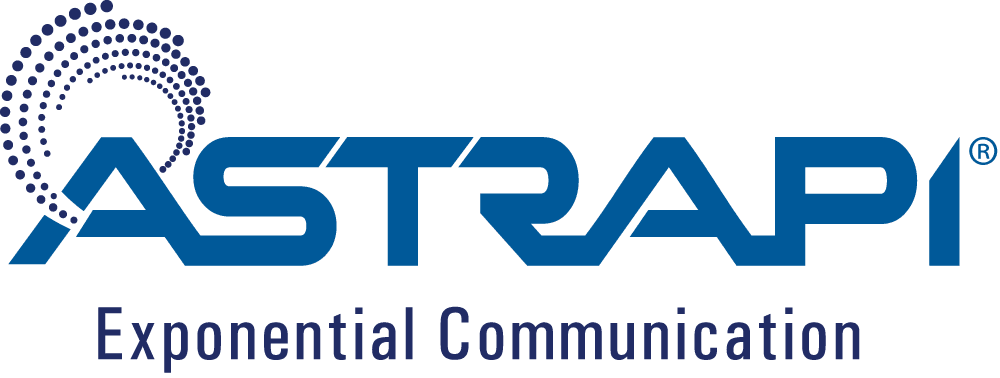NSF Awards Astrapi a Phase II, Small Business Innovation Research Grant to Extend Spiral Polynomial Division Multiplexing (SPDM) Research
FOR IMMEDIATE RELEASE
Astrapi Contact: David Shaw
Direct email: [email protected]
Dallas, TX (October 3, 2017)
Astrapi Corporation is pleased to announce the award of a National Science Foundation (NSF) Phase II Small Business Innovation Research (SBIR) grant related to Spiral Polynomial Division Multiplexing (SPDM). SPDM provides a structured way to dramatically increase the flexibility of symbol waveform design and to use this additional flexibility to address key problems in telecommunications. In addition to robust synchronization, potential benefits of SPDM include dramatically increased spectral efficiency, improved interference rejection, lower latency, and reduction of the Peak to Average Power Ratio (PAPR). This second phase of the research will further reduce SPDM to practice, leading to a hardware implementation.
Astrapi has over forty patents, issued, pending, filed provisionally and covered internationally under Patent Cooperation Treaty (PCT) provisions defining and controlling an entirely new field – Spiral Modulation. Spiral Modulation opens the door to much higher spectral efficiencies than were previously thought possible and may be applied to increasing the spectral efficiency of traditional signal modulation techniques with minimal redesign to existing radio architecture design.
“In Phase II we have extended our research partnerships,” said Dr. Jerrold Prothero, Astrapi Founder and CEO. “In addition to Dr. fred harris of the San Diego State University Research Foundation, the Southwest Research Institute (SwRI) has joined the team. Promising discussions concerning additional Phase II-related partnerships are in progress. This research will eventually provide benefits for a wide variety of communication systems, including satellite, defense, mobile, and Internet of Things. For example, the satellite DVB-S2 industry network standard reflects a broad potential market for SPDM-based systems. Other potential markets for our technology include those serviced by Cellular (4G- and emerging 5G-LTE), Wireless Local Area Network (802.11 a/g/n), Digital Audio and Terrestrial Television Broadcasting (DAB, DVB-T), Cable Service (DOCSIS 3.1), and Digital Subscriber Line (VDSL and VDSL2) among others. Astrapi is now actively establishing technology transition relationships.”
A critical and limiting problem for any communication system is synchronization between the transmitter and receiver. Phase I project results for SPDM demonstrated considerable promise for supporting very precise and low-overhead synchronization. Phase I also pointed towards very significant SPDM power advantages.
ABOUT Astrapi Corporation
Astrapi is the pioneer of spiral-based signal modulation, which opens an unexplored area for innovation at the core of telecommunications. Based on a generalization of Euler’s formula, the foundational mathematics for telecom, Astrapi provides fundamentally new ways to design the symbol waveforms used to encode digital transmissions. By applying new mathematics to signal modulation, Astrapi is able to improve the trade-off between the four fundamental parameters in telecommunications: bandwidth, signal power, data throughput, and error rate. The resulting efficiency translates into higher spectral performance with more bits available at a lower cost.
ABOUT The National Science Foundation
The National Science Foundation (NSF) is an independent Federal agency created by the National Science Foundation Act of 1950, as amended (42 USC 1861-75). The Act states the purpose of the NSF is “to promote the progress of science; [and] to advance the national health, prosperity, and welfare by supporting research and education in all fields of science and engineering.”
NSF funds research and education in most fields of science and engineering. It does this through grants and cooperative agreements to more than 2,000 colleges, universities, K-12 school systems, businesses, informal science organizations and other research organizations throughout the US. NSF receives approximately 55,000 proposals each year for research, education and training projects, of which approximately 11,000 are funded. In addition, the Foundation receives several thousand applications for graduate and postdoctoral fellowships.
ABOUT Southwest Research Foundation
Southwest Research Institute is an independent, nonprofit, applied engineering and physical sciences research and development organization using multidisciplinary approaches to problem solving. The Institute occupies 1,200 acres in San Antonio, Texas, and provides more than 2 million square feet of laboratories, test facilities, workshops, and offices for nearly 2,600 employees who perform contract work for industry and government clients.
ABOUT San Diego State Research Foundation
The purpose of SDSU Research Foundation is to further the educational, research and community service mission of San Diego State University. Established in 1943, SDSU Research Foundation is a non-profit, auxiliary organization chartered to further the educational, research and community service objectives of San Diego State University. SDSU Research Foundation is currently administering approximately 1,000 active grants and contracts, and annual revenues approaching $160 million. The Foundation is the largest auxiliary within the California State University (CSU) system. SDSU is an urban, public education institution, the oldest and largest in the San Diego region. Designated as a research university with high activity by the Carnegie Foundation, SDSU offers 81 bachelor’s degrees, 72 master’s, and 16 doctorates.
